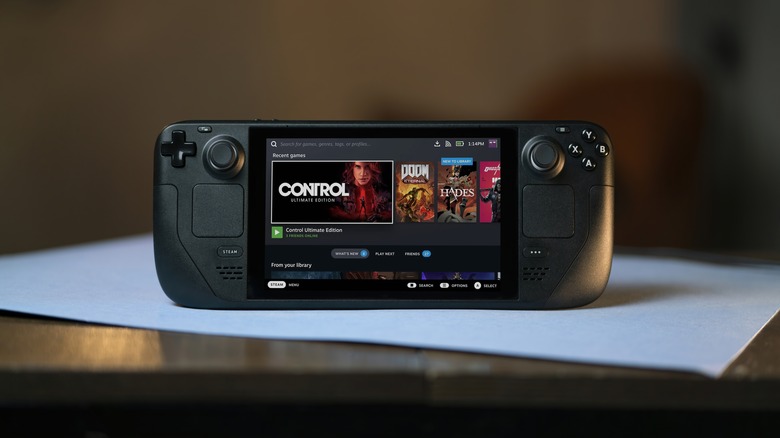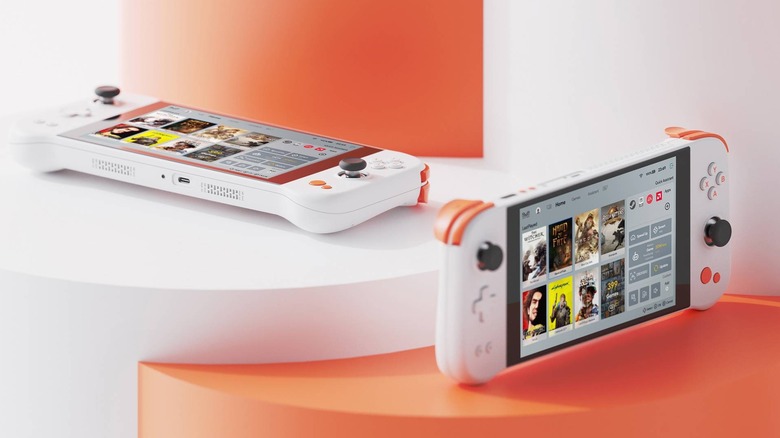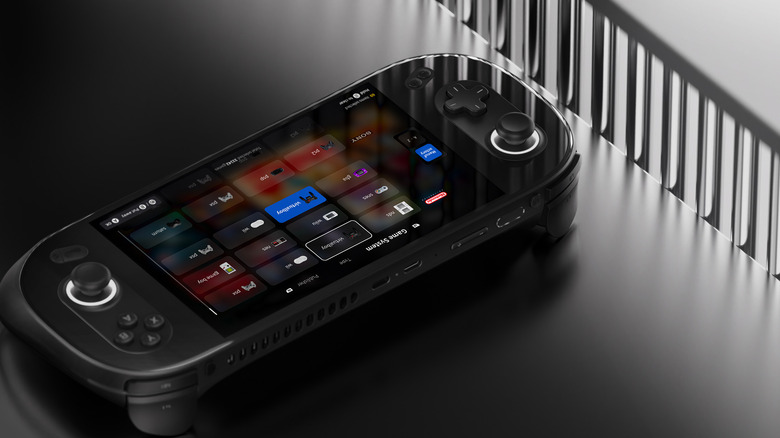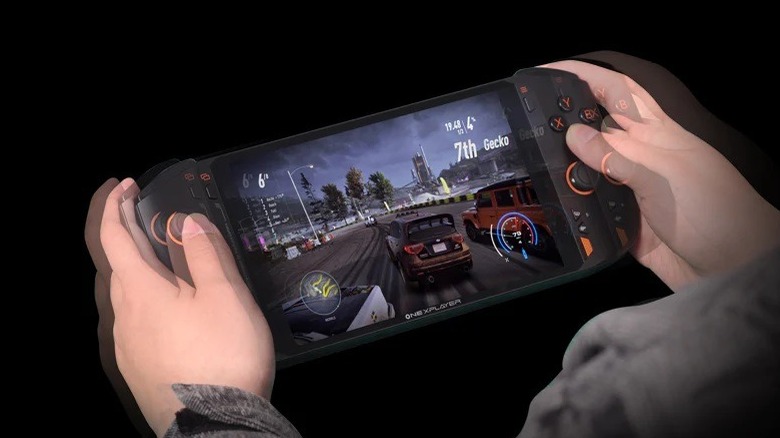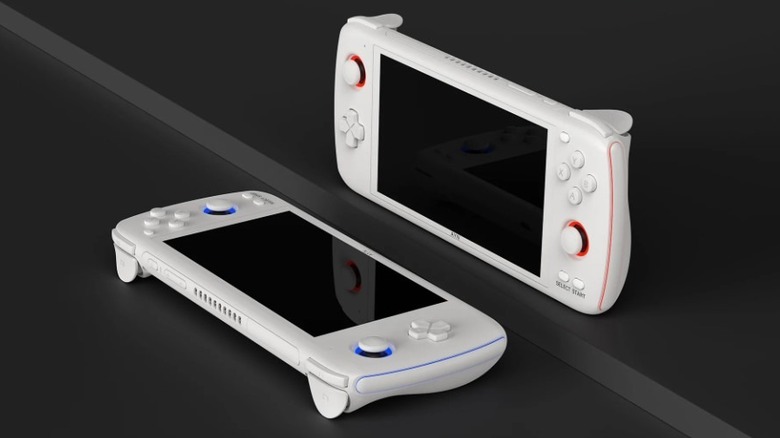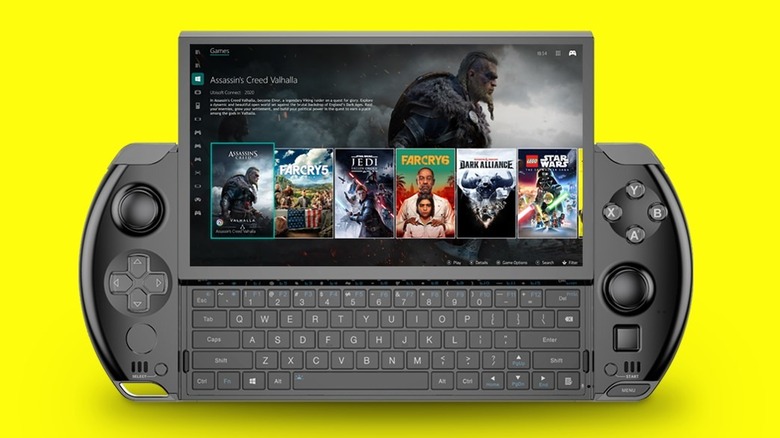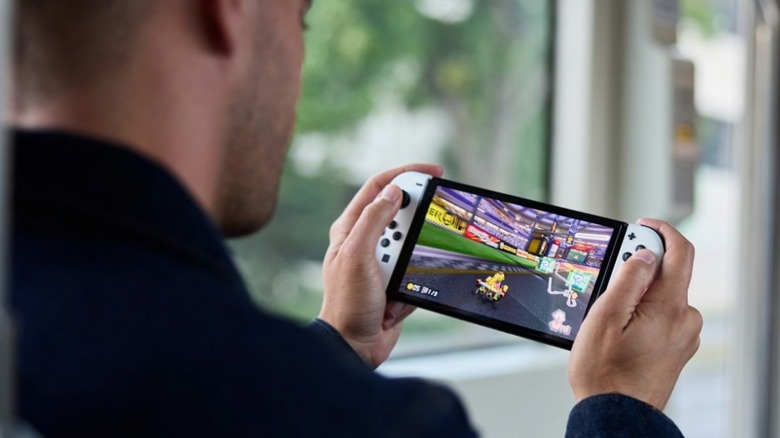The Seven Best Steam Deck Alternatives Right Now
The Valve Steam Deck is one of the hottest consoles right now and for good reason. It packs enough power into its relatively small form factor to be able to play some of the latest AAA PC games on the go. The Steam Deck is able to achieve this thanks to its custom AMD SoC that incorporates a quad-core Zen 2-based CPU and an 8-core RDNA2 integrated GPU. The combination delivers over 1.6 teraflops of gaming performance that is more than capable of driving its 1200 x 800 pixel 7-inch IPS LCD display at solid frame rates.
It comes in 64GB, 256GB, and 512GB variants, which sadly, has been hard to get since it launched earlier this year thanks to the global chip shortage. It is also only available in limited markets including the U.S., Canada, the E.U., and the U.K. It also recently became available to order in Japan, South Korea, Taiwan, and Hong Kong. Although Valve has further expansion plans, gamers will be keen to get their hands, if not on the Steam Deck, at least something similar. There are a number of great alternatives already on the market, or on the cusp of launching, that are worth a closer look.
Ayaneo Next
If you're looking to get your hands on the top Steam Deck alternative right now, the Ayaneo Next is your best bet. Like the Steam Deck, it uses an AMD SoC, although in this case, it will be more familiar to users of AMD-powered ultrabooks. To this end, it is fitted with an AMD Ryzen 5825U with an octa-core Zen 3-based CPU and a Radeon Vega 8 integrated GPU.
Although the GPU is not as powerful as the Steam Deck's, the newer CPU architecture helps to compensate somewhat. That said, the Ayaneo Next can have its power ramped up from 16W to 28W which lifts its gaming performance to similar levels to the Steam Deck running at its default 16W. The Ayaneo Next runs Windows 10 out of the box, meaning that it will be instantly compatible with a wide range of games if owners already use platforms like Valve's own Steam Store or Xbox Game Pass for PC.
Ayaneo Air Pro
A stablemate to the Ayaneo Next, the Ayaneo Air Pro is also an excellent Windows-based handheld gaming console alternative to the Steam Deck. It is powered by the same AMD 5825U, but it is much more compact. This also means it has a smaller display at just 5.5 inches, which could make playing some PC games a little awkward when it comes to reading text.
On the plus side, however, the display is a high-resolution 1080p OLED panel although AAA PC games will be best played on it at lower resolution settings. Fewer graphics-intensive games, however, could well benefit from being displayed at a full 1080p resolution. It lives up to its "Air" name weighing in at just 398 grams, around 250 grams to 350 grams lighter than competing consoles like the Steam Deck. Its launch is imminent following a hugely successful Indiegogo campaign which only recently came to a conclusion after raising over $1.5 million in sales.
Ayaneo 2
Not available yet, but already being teased on the Ayaneo website is the Ayaneo 2 (also known as the Ayaneo Geek 2). This is one of a few potential Steam Deck rivals in the immediate pipeline. This little beast packs a 7-inch 1080p IPS LCD display and will be powered by the AMD Ryzen 6800U, the most powerful ultra-low voltage x86 SoC currently on the market. You will currently find it fitted to the likes of the new ASUS Zenbook 13 S OLED ultrabook. The Ryzen 6800U features an octa-core with Zen3+ architecture paired with the powerful AMD 680M integrated GPU.
This will lift the Ayaneo Next 2 onto another level with 12 RDNA2-based graphics cores compared to the Steam Deck's 8 RDNA2 GPU cores. It is also fabricated on TSMC's 6nm process, which should help ensure it delivers solid sustained performance when combined with Ayaneo's active cooling solution. The only downside is that Ayaneo 2 is unlikely to be quite as affordable as the Steam Deck with an expected price tag of around $650, but it looks sleeker and offers a lot of flexibility. Or you can just opt for the Ayaneo Next, listed above, which is widely available now if you can't wait it out for another few weeks.
One X Player Mini Pro
Another Steam Deck alternative that is just about to hit the market is the new One X Player Mini Pro, which is powered by the latest Intel Core i7-1260P CPU with Iris Xe graphics. The CPU is a 12-core monster that supports up to 16 threads while the Iris Xe graphics comes with 96 EUs (Execution Units) for truly powerful performance in a handheld of this size. With 100W PD support, it ensures the device will deliver fully on its promise when plugged in, while a 48Wh battery keeps you going away from a source of power.
The device even supports an eGPU over its USB 4.0 port that allows you to hook your handheld up to a full-power external graphics card solution. Prospective customers can place a deposit now to secure a device at up to 22% off the regular price along with some neat bonuses including a docking station available right up to its October 8 launch date. This means its current starting price of $969 will rise to $1,249. A variant with the AMD 6800U is also up for pre-order on the site, but won't launch until later this fall, although it will add yet another tempting alternative to the Steam Deck to the list.
Ayn Loki Max
Another powerful Steam Deck alternative that has recently been announced is the Ayn Loki Max. It features the same AMD Ryzen 6800U as the Ayaneo Next 2 and One X Player Mini Pro AMD edition, with reservations for the device already open. Naturally, the underlying architecture and performance will be virtually identical to the Ayaneo Next 2, but it does look like it will have one or two extra tricks up its sleeve including support for the USB 4.0 standard (which integrates Thunderbolt 3 connectivity for eGPU support).
The company knows its target audience and has incorporated customizable RGB lighting effects into the console, also helping to set it apart. Compared to the Ayaneo Next 2, its only major drawback is that it uses a slightly smaller 6-inch 1080p display and its design isn't quite as sleek. However, it should be more affordable as a result, even if not quite Steam Deck levels of affordability. An advantage in pricing that Valve enjoys is that it is able to subsidize the Steam Deck up front and recoup costs and hopefully turn a profit with game sales through its Steam Store.
GPD WIN 4
Another in the stream of AMD Ryzen 6800U-powered PC-based handhelds on the cusp of release is the GPD WIN 4, which is expected to ship in December. This is similar in style to the other Steam Deck alternatives, but it does offer one extra trick that none of the others do -– a built-in backlit QWERTY keyboard hides underneath its slidable 6-inch 1080p display. This can come quite handy in a number of different scenarios, including in games, and is much more convenient than resorting to an onscreen keyboard.
While it runs Windows 11 out of the box, the company says that it has worked with Valve to make full SteamOS support available for the device too. Like a couple of the other consoles here, it also sports a USB 4.0 port with eGPU support for a more full-powered gaming experience when paired with its companion dock. As an added bonus, the smart docking station (sold separately) even sports HDMI 2.1 connectivity for high-refresh-rate monitor support. The soon-to-be superseded GPD WIN 3 with 11th gen Intel silicon is still retailing for around $1,200, which will be indicative of the pricing for GPD's latest model. It's getting pricey, but it is also a very capable machine.
Nintendo Switch
The venerable Nintendo Switch, which is responsible for kickstarting the current handheld craze, is still a viable Steam Deck alternative. Although its aging custom NVIDIA Tegra processor pales in comparison to the processing power of the Steam Deck's custom AMD SoC, it still plays many of the games that are also available to PC gamers on the Steam Deck. Although these are often ports of the same titles, at least gamers can take comfort knowing that they have been properly optimized for the platform — and its smaller screen.
Its most recent iteration, the 7-inch OLED model, manages to ramp up the visuals with bright colors and more contrast in such a way that you might actually think it comes with improved graphics capabilities. It's also more affordable than the Steam Deck, although it is not as remotely flexible as the Steam Deck, which can also be used as a Windows or Linux PC when docked, for example. Still, the Switch remains worth considering if gaming on the go is your main focus.
